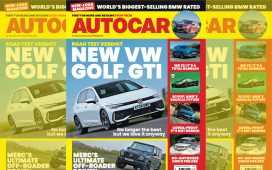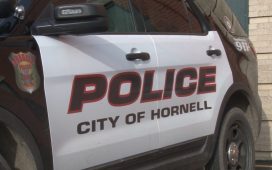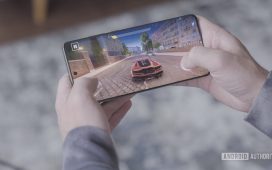In the dark recesses of my mind, there is a memory of swishing wind over the top of a too-fast car on a road poorly prepared for the blackness of early night — the darkest time after sunset when we haven’t yet adjusted to our nocturnal reality. My mother is uncomfortable in the driver’s seat. Despite being a driver for more than a decade, she is ill-disposed to be driving under the guide of her headlights and curses the sun for its early retreat the entire way home. This road — where the posted speed limit is 45 miles per hour — harbors a neighborhood to its left, a place my father grew up and where the sight of police cars isn’t uncommon and to the right, a gas station. Not only does it sell the favored meal of our insatiable vehicle, but a host of basic necessities, snacks and, famously, Virginia Beach’s version of Philadelphia-style hoagies. The nearest crosswalk lies down the road, turning a two-minute walk into a 20-minute odyssey — most of one’s time is spent waiting for permission to cross.
There’s a movement in the shadows. The searching eyes of our automobile find a man, dressed in black, illegally crossing the street. It is likely that he is getting a drink or snack from the station, but his presence on the road is an anomaly. I can feel the engine of our car roar in disapproval; it is the sound I imagine Theseus heard deep in the Labyrinth, a place where he, too, was not welcome. Yet, unlike the Minotaur, our charge is disrupted by my mother’s foot stepping on the brake. He will be able to follow his yarn home, spared the fate of a roadside memorial. This isn’t the first time this has happened, a pedestrian causing a near-fatal miss, and my mother’s response remains the same.
“Not my fault if I hit him.”
Much fuss is made about the dangers of the modern world. The specter of death hangs over us in a way it hasn’t in a generation; gun violence continues to fester disproportionately to the rest of the world and social media is rife with images of blood and carnage from distant atrocities. American life expectancy has declined to a two-decade low of 76.4 years. Yet, despite all of these threats, there is a familiar killer that stalks our streets every day: the automobile.
Vehicle collisions are the leading cause of death for teenagers in the United States. Among the entire U.S. population, car crashes maintain a spot in the top 20 list for causes of death, with risk levels decreasing the older drivers get; traffic accidents are only the 5th highest cause of death in adults 35-44, behind malignant neoplasms and heart disease. And although overall car-related fatality rates have decreased, the rising popularity of the SUV make the collisions that occur far more dangerous; a study by Justin Tyndall, associate professor of economics at the University of Hawaii, found that full-sized SUVs and trucks were far more likely to kill pedestrians in the event of a collision than sedans. Although I’ve only included data from the United States, the global trend is far more dire. Traffic accidents are the leading cause of death for people aged 5-29, with more than half of all deaths including pedestrians or bicyclists.
How did we get here? How did a horseless carriage, barely 100 years old, manage to not only impose itself in every city around the world, but bypass war, famine and sickness as the greatest danger in everyday life?
In his book “Happy City: Transforming Our Lives Through Urban Design,” urban planner Charles Montgomery presents the preautomobile city as one of organized chaos. An idyllic Eden of urbanism, pedestrians, bicyclists, streetcars and carriages moved in tandem. No one went more than five miles per hour, and it was easy to navigate the center avenue. Before the automobile, there were few, if any, traffic fatalities.
All of this changed in 1899. At the cusp of the 20th century, Eve ate the apple, and Henry Bliss became the victim of the first motor vehicle fatality in American history. Thousands more would follow him to the grave, with more than half of those killed children and teenagers. In the 1920s alone, more than 200,000 people were killed by the automobile — nearly double the amount of people who died in World War I. Naturally, motorists were blamed. Cities burst with the rage of grief, descending on those who slew their neighbors and children. Montgomery writes, “All levels of society banded together to protect the shared street. Police, politicians, newspaper editors and parents all fought to regulate automobile access, ban curbside parking and, most of all, limit speeds to ten miles per hour.”
Today, curbside parking is so ubiquitous that to suggest limiting it elicits death threats from the motorists of the free road. The 10-mile-per-hour speed limit is unheard of outside of small neighborhood streets. Clearly, society failed in its crusade against the rise of the automobile. Even in the most dense American cities today, traffic clogs the road, relegating pedestrians to too-narrow sidewalks and underfunded public transportation. You cannot cross the road in the most convenient way. You are limited in your mobility.
***
“The streets are made for vehicles to run upon,” declared Charles Hayes, the president of the Chicago Motor Club, in the early 20th century. While it is not explicitly mentioned by Hayes, the underlying implication of his proclamation is that the streets are not made for pedestrians to walk across. Although people had owned their streets since the first trail forged by the feet of hunter-gatherers, capitalist interests would wage war against the common people who populated the city. In retaliation, urbanites targeted the profits of automobile companies. In an article from 1924, The New York Times declared, “Nation roused against motor killings,” evidenced by a 12% decrease in car sales.
The response was Motordom, a powerful alliance of disparate automobile interest groups driven by one desire: to make the roads a new mecca for the driver. While local governments, pedestrians and the press sought to enforce limitations on car use — a 1923 petition in Cincinnati would have required that car engines shut off if they surpassed 25 miles per hour — Motordom threw considerable financial resources into making sure their efforts failed. While 42,000 people signed the Cincinnati petition, it ultimately failed, in part due to the lobbying and political cartoons of Motordom. Over the course of the decade, these groups would reshape the street in their favor: they invented the jaywalker, rewrote local traffic codes and successfully portrayed the car as the ultimate symbol of American freedom. With the automobile, you could travel unrestricted by schedules and distance; it was the ultimate tool of mobility if you weren’t a pedestrian.
To learn more about the motivations behind the groups who would eventually constitute Motordom, I met with historian Peter Norton of the University of Virginia. Although he didn’t coin the term, Norton revived “Motordom” to study the effects of our civilization’s car dependency. During our conversation, Norton explained the capital interests behind the historical vilification of the pedestrian.
“There were proposals to restrict automobiles in cities and promote other ways of moving people around,” Norton said. “So automobile interest groups got together, they had meetings and said ‘Hey, we better organize.’ The word Motorodom goes back to about 1900, but it was that pressure around 1920 that made the word a big word … for the automobile interest groups.”
While money was essential to Motordom’s success — it was bankrolled by the car companies, insurance providers and wealthy drivers — automobile interest groups also enacted a coordinated effort to change society for their benefit.
“Money was essential, but it was also a three-pronged strategy that flipped this around in Motordom’s favor,” Norton said. “They were interested in changing laws to their favor; prong two, they wanted to change engineering standards in their favor; and prong three, they wanted to change social norms in their favor. They were very successful at all three, (and) money was part of why they were so successful at all three.”
One key to Motordom’s success was the shift from a common law understanding of the street to the introduction of statutory law. Centuries of case law and court decisions upholding the right of the street for everyone were superseded by novel ordinances and traffic codes, all of which prioritized access to automobiles. In an effort to regulate the behavior of pedestrians, the car lobby paid for road safety courses in schools, teaching children to stay out of the street — their ancient playground — and always look both ways. As a child, I remember my mom telling me to look both ways before crossing a street, lest I be “flattened like a pancake.” In my toddler brain, I can remember thinking I would end up like Flat Stanley, my organs compressed to the width of paper and my new flat body left to bake on the black pavement.
But adults were less pliable than children, so the lobby introduced another strategy to rewrite the urban ballet. They created the jaywalker and blamed pedestrians for their own deaths.
“Today, the word jaywalker doesn’t have any sting to it, but it had a big sting to it 100 years ago,” Norton said. “It meant hick, hayseed, idiot, moron. It was an offensive term. That’s hostile, and we know it was hostile because a lot of people objected and said the word was much too hostile to be used against people walking where they wanted. But the automobile interest groups, Motordom … were very intent on making (walking in the street) look not just unsafe, but stupid.”
We, as Americans, undoubtedly live in the heart of Motordom, beholden to King Oil. Not only have the lobby groups permeated into the modern day, but more and more industries and institutions are beholden to the car. Oil companies are reliant on global car dependency to make most of their profit and in many U.S. cities, you need a car to maintain a high quality of life, like socializing with friends or buying groceries. Norton pointed out that all of these miles add up. While advancements in safety technology might make driving less dangerous for everyone, we will still need to drive more.
“To get affordable housing, it makes financial sense to live 50 miles from work,” Norton said. “When the roads get congested, the formulas say (to) expand the road, which means it’s now affordable to live 60 miles from work. We have a lot of policies, including our traffic safety policies, housing policies and road policies that incentivize more driving. The vehicle miles of travel per person has gone way up, and that means even if we do make each mile safer, we can’t win, because people are just having to drive more.”
***
Motordom has led to the very real physical danger of automobile accidents and, for most people, this is the only threat of cars. It’s easier to fear a raging bull than slow-acting poison, but one of Motordom’s biggest killers doesn’t strike for decades: inactivity.
In his book “Walkable City: How Downtown Can Save America, One Step at a Time,” city planner Jeff Speck highlights some startling statistics about American obesity. In just the past few decades, childhood obesity has tripled, with the overall rate of obesity rising from 1-in-10 Americans to one-third of the population. Obesity is one of the most efficient killers of Americans over the age of 30. According to Speck’s estimate, “excessive weight now kills more Americans than smoking.”
Each of these dangers can be placed squarely at the feet of Motordom. Speck highlights multiple studies that allude to a connection between suburban living and obesity-related health issues. In Atlanta, one of the most congested and car-dependent cities in the country, every additional hour of driving increases your risk of obesity by 6%. In San Diego, residents in low-walkable neighborhoods were more overweight than residents in high-walkable areas. When we look at what is killing us in this country, we need to look past the initial label. For many, there is an underlying lack of mobility and corresponding wellness concerns that come from relying on cars for transportation.
Speck quotes a passage by Richard Jackson, an epidemiologist and co-author of “Urban Sprawl and Public Health: Designing, Planning, and Building for Healthy Communities,” which recounts his experience seeing an elderly woman hauling groceries on the side of the highway under the oppressive summer heat.
“If she had been killed by a truck going by, the cause of death would have been motor-vehicle trauma, and not a lack of sidewalks and transit, poor urban planning, and failed political leadership. That was the biggest ‘aha!’ moment for me. Here I was focusing on remote disease risks when the biggest risks that people faced were coming from the built environment.”
I fear I will be killed by a car. It may not be a physical beast, ripping you asunder as a tornado besets the land, but the system that Motordom has put in place, the institutions that maintain it, which we passively accept, will coax the life from you one way or another. If you die of heart disease or some other symptom of poor physical health, where do we put the blame? If your lungs give out after decades of driving and living next to busy roads and highways, can we blame physical weakness.
Fortunately, it doesn’t have to be this way. The city of just a century ago is not so far removed that we’ve forgotten how to build it. Today, the doctrine of walkability and new urbanism has risen in opposition to the failed experiment of the sprawling city. In Ann Arbor, miles of new protected bike lanes have been built in just the past few years, and novel projects, such as removing curbs from the area around State and Liberty, are successfully slowing down cars and returning pedestrians their ancient right — the ability to cross the street. These developments are in line with not only the rest of the country but the rest of the world. Today, we think of Times Square as a walkable plaza — albeit one besieged by tourists — but it wasn’t until 2016 that the process of pedestrianization was complete. Public health experts now warn of the risks of car pollution and use, while politicians work toward Vision Zero: a global initiative to eliminate traffic deaths across the world.
These efforts require a groundswell of support. Much like the Motordom of old, the current system is maintained by familiar names: Exxon, Tesla, the countries of OPEC and many more. We can’t expect these institutions to relinquish their control of the streets to the people. We can’t expect people to abandon Motordom if our transportation priorities and housing stock continue to induce sprawling, single-family suburbs. In my hometown, it is impossible to get anywhere without a car. People who simply cross the street to get gas station groceries are belittled as stupid and those who use our nonexistent bus system are seen as dangerous. The lack of choices forces my mother, someone who hates driving at night, refilling her gas tank and even leaving the house, to drive 15 minutes to get anywhere worth being. But it doesn’t have to be this way. Activists across the country are fighting for pedestrian safety, slower speeds and removing cars from our streets. A majority of American support creating a 15-minute city, where everything you need is only a 15 minute walk from your door. People are fighting for change; we just need to support it.
Statement Correspondent Joshua Nicholson can be reached at joshuni@umich.edu.






